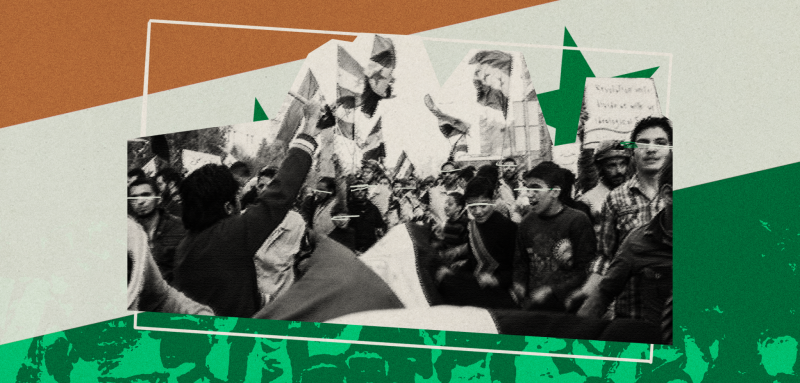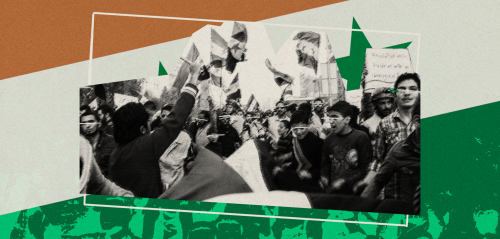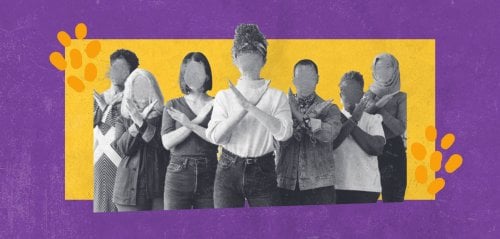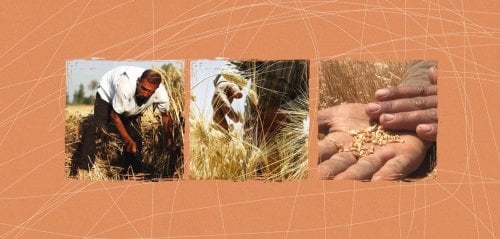It came as no surprise that Syrians once again took to the streets to vent their frustrations and protest against recent government economic decisions and measures that had led to a stark rise in the cost of living, rendering it unaffordable for most Syrian families. What's noteworthy is that this new wave of protests began in the Sweida Governorate, and there are several reasons for this choice. Firstly, the central government's authority in this province has long been fragile and tenuous, making it a natural starting point for any form of dissent. Additionally, there is a significant social bloc in Sweida that fundamentally opposes the regime, with its own political, civil, and religious leadership.
While the direct causes and immediate trigger for the protests was the recent economic decisions, they swiftly evolved into a political movement. Unlike the initial protests that demanded the government's downfall, these demonstrations are now calling for the ousting of the entire regime.
Through interviews with key figures leading the Sweida protests, such as religious leaders, professional unions, and political parties, as well as official statements, it becomes evident that there is a growing awareness among the populace. They recognize that the root of the problem lies not just with the government but with the authoritarian nature of the regime itself. The slogans they chant have also transformed, shifting from localized demands to broader national and universal issues. Importantly, they emphasize the peaceful nature of their movement and their commitment to protecting both private and public property.
Syrian opposition figures, particularly those abroad, are placing bets on this second wave of protests spreading to all Syrian provinces to eventually topple the regime, with hopes for coastal areas joining and substantial Alawite participation this time around
What's particularly noteworthy is that these protests, which started modestly, have gradually gained momentum and taken on a more popular character. Equally significant is that, as expected, the regime has yet to resort to using force to suppress these protests. It's likely that they won't do so unless specific conditions are met.
These conditions may include incidents such as the display of Israeli flags during protests, as seen in some social media posts, or acts of violence, whether carried out by extremists or instigated by infiltrators from the security apparatus, drug gangs, and other elements. Calls to close the offices of the Ba'ath Party, expel security forces from the governorate, and shut down some state institutions may also serve as pretexts for the regime to intervene. The regime could also benefit from direct foreign interventions or media incitement, especially of a sectarian nature, which Syrians have witnessed in the past.
Certainly, the most significant trigger for the regime to suppress these protests would be if they began to spread to other provinces. However, at present, this possibility remains relatively weak.
The regime, for its part, will employ any means to bolster the resilience of its security and military institutions, as these constitute its unyielding power base. This is particularly significant, considering that the social support structure for these agencies has significantly eroded due to the steep cost of living.
For example, the regime has strategically benefited from attacks by terrorist groups in the southern Idlib region on army positions that led to casualties among its ranks. It also benefits from the discourse of certain opposition factions abroad, which advocate a return to congregations in mosques and the resurgence of protest rallies. Such calls starkly remind many Syrians of the calamitous consequences that followed such actions, prompting the regime's propaganda machinery to underscore that the nation as a whole, rather than just the regime, is the intended target.
Many Syrian opposition figures, particularly those abroad, are placing their bets on this second wave of protests expanding to encompass all Syrian provinces and ultimately culminating in the overthrow of the regime. They have particular hopes for protests erupting in the coastal regions of Syria and are counting on substantial Alawite participation this time around.
Undoubtedly, the most compelling incentive for the regime to suppress and quell these protests would be if they were to propagate to other provinces, particularly those along the coast. However, at present, this possibility remains somewhat faint.
An impartial analysis of the country's situation after twelve years of enduring crisis and the living conditions of the Syrian populace paints a different picture. The tragic results of the conflict in and against Syria are still fresh in memory, to which many international powers contributed for their own interests at the expense of the interests of the Syrians themselves. So it is unsurprising that protests remain predominantly concentrated within the Sweida Governorate, with scattered hotspots of protest activity in Daraa, Hama, Deir ez-Zor, or Aleppo. These are expected either to wane or be contained by the regime. Regarding the Syrian coastal region, the likelihood of protests, particularly involving Alawites, is almost non-existent. Despite robust and public criticism of the regime, often marked by insults and offensive language that extends even to the President, his spouse, and his senior officers, there have been only a few individual instances of outspokenness on social media. Notably, these individuals have not faced immediate arrest, presumably in anticipation of potential repercussions.
Numerous factors contribute to the reluctance of Alawites to participate in protests against the regime. Firstly, there is an utter absence of any effective political, religious, or civic opposition leadership among them, mirroring the situation in the Sweida Governorate. Secondly, the regime exerts control over Alawite tribal and religious leadership, using it as a means to prevent large-scale opposition movements. Thirdly, the regime leverages the influence of military and security officers within their social circles. Fourthly, individualistic tendencies are predominant among this group. Fifthly, there exists a profound fear of retribution from the regime, and lastly, a strong apprehension exists regarding the potential rise of extreme Islamist currents, which the regime has succeeded in convincing many that it will become an alternative should it fall.
If our analysis holds true, the likely trajectory of this fresh wave of protests points toward a period of stalling, stagnation and accommodation. The regime retains an array of tools in its arsenal to facilitate this outcome, and it has already initiated several measures. For example, it has introduced additional bonuses for employees in universities, the judiciary, the military, and other government agencies, in addition to their regular salaries.
* The views and opinions expressed in this article are those of the author’s and do not necessarily reflect the official policy or position of Raseef22
Raseef22 is a not for profit entity. Our focus is on quality journalism. Every contribution to the NasRaseef membership goes directly towards journalism production. We stand independent, not accepting corporate sponsorships, sponsored content or political funding.
Support our mission to keep Raseef22 available to all readers by clicking here!
Interested in writing with us? Check our pitch process here!







